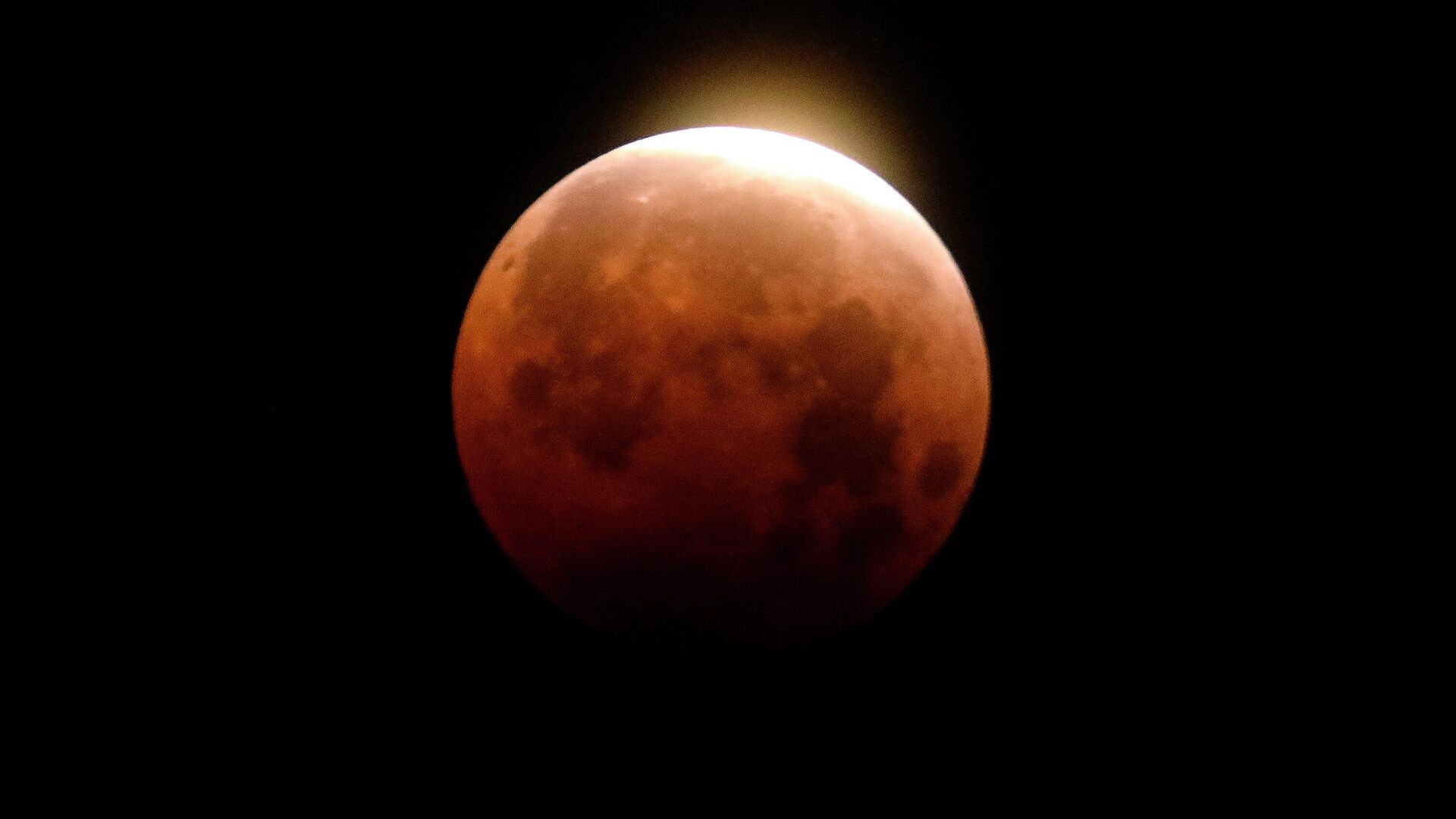https://sputnikglobe.com/20220515/heres-why-the-moon-turns-red-during-a-lunar-eclipse-1095528725.html
Here's Why the Moon Turns Red During a Lunar Eclipse
Here's Why the Moon Turns Red During a Lunar Eclipse
Sputnik International
The so-called Super Flower Blood Moon lunar eclipse will take place on 15-16 May 2022 and is set to have stargazers quite literally seeing red. 15.05.2022, Sputnik International
2022-05-15T17:02+0000
2022-05-15T17:02+0000
2022-10-19T20:47+0000
science & tech
eclipse
moon
https://cdn1.img.sputnikglobe.com/img/07e6/05/0f/1095528700_0:156:3001:1844_1920x0_80_0_0_8ba701aa331927b24226a2860d04aa41.jpg
The Earth's satellite turns scarlet every time a full lunar eclipse occurs - something that may have fuelled our ancestors' belief that they were a sign of bad luck.However, there is a simple explanation for this phenomenon. The Moon’s red hue during a total eclipse appears because of the way light disperses. When the Sun's rays reach our planet, blue and green light is scattered, but orange and red remain visible, which is why the Moon turns scarlet.As such, total lunar eclipses are frequently referred to as "Blood Moons". Different stages of the eclipse can show up various shades on the Earth's satellite, with it switching colours from original greyish to scarlet, amber and orange.One may be lucky enough to catch a glimpse of the lunar colour palette on Sunday, with stargazers in South America and in the eastern coast of North America due to have a great view of the upcoming eclipse.Dubbed “Super Flower Blood Moon”, the eclipse will also be visible from much of Africa and Europe, Noah Petro, chief of NASA's Planetary Geology, Geophysics and Geochemistry Lab, told CNN.If you want to observe the eclipse, it is due to start at 10:28 p.m. EDT on Sunday (02:28 GMT on Monday), kicking off with a partial eclipse. The Blood Moon peak is expected around 12:11 a.m. EDT (04:11 GMT), and the event will wrap up at 1:55 a.m. EDT (05:55 GMT).
Sputnik International
feedback@sputniknews.com
+74956456601
MIA „Rossiya Segodnya“
2022
Sputnik International
feedback@sputniknews.com
+74956456601
MIA „Rossiya Segodnya“
News
en_EN
Sputnik International
feedback@sputniknews.com
+74956456601
MIA „Rossiya Segodnya“
Sputnik International
feedback@sputniknews.com
+74956456601
MIA „Rossiya Segodnya“
science & tech, eclipse, moon
science & tech, eclipse, moon
Here's Why the Moon Turns Red During a Lunar Eclipse
17:02 GMT 15.05.2022 (Updated: 20:47 GMT 19.10.2022) The so-called Super Flower Blood Moon lunar eclipse will take place on 15-16 May 2022 and is set to have stargazers quite literally seeing red.
The Earth's satellite turns scarlet every time a full lunar eclipse occurs - something that may have fuelled our ancestors' belief that they were a sign of bad luck.
However, there is a simple explanation for this phenomenon. The Moon’s red hue during a total eclipse appears because of the way light disperses. When the Sun's rays reach our planet, blue and green light is scattered, but orange and red remain visible, which is why the Moon turns scarlet.
As such, total lunar eclipses are frequently referred to as "Blood Moons". Different stages of the eclipse can show up various shades on the Earth's satellite, with it switching colours from original greyish to scarlet, amber and orange.
One may be lucky enough to catch a glimpse of the lunar colour palette on Sunday, with stargazers in South America and in the eastern coast of North America due to have a great view of the upcoming eclipse.
Dubbed “Super Flower Blood Moon”, the eclipse will also be visible from much of Africa and Europe, Noah Petro, chief of NASA's Planetary Geology, Geophysics and Geochemistry Lab, told
CNN.
If you want to observe the eclipse, it is due to start at 10:28 p.m. EDT on Sunday (02:28 GMT on Monday), kicking off with a partial eclipse. The Blood Moon peak is expected around 12:11 a.m. EDT (04:11 GMT), and the event will wrap up at 1:55 a.m. EDT (05:55 GMT).

